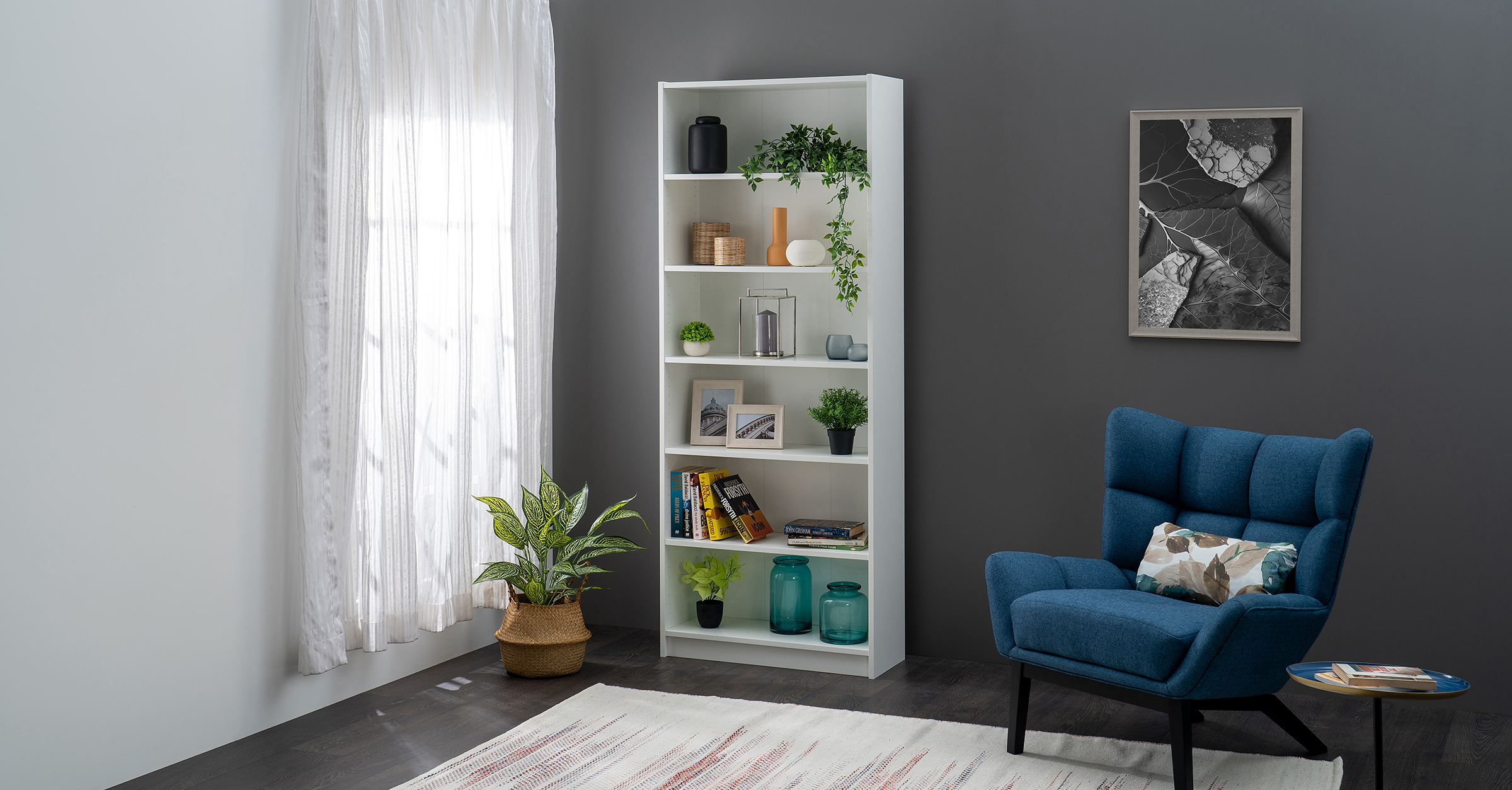
With the evolving landscape of architecture and styling homes, space can be a luxury, and styling can be a choice. In the same way, the living room can be designed with smart planning to maximise both style and utility. This might mean choosing multifunctional furniture that can easily accommodate large family gatherings or selecting decor that doubles as storage to keep the living area clutter-free. This blog will discuss the importance of planning, layout optimisation and adding elements to ensure your living room feels spacious and welcoming.
1. Vibrant Colour Palette:
Earthy tones like Terracotta, ochre, and umber pay homage to natural beauty—from the vast Thar Desert to the fertile Ganges plains. Bright reds and oranges evoke the hues of traditional attire and the enthusiasm of Indian weddings. At the same time, yellows and greens mirror the country’s lush landscapes and the colours of festivals like Diwali and Holi. For example, a living room can feature a bold marigold yellow wall accented with saffron orange and peacock green cushions and curtains in a deep vermilion, creating a lively and harmonious space.
2. Rich Textiles and Fabrics:
Silk, known for its lustrous finish and vibrant colours, can be used for curtains that gracefully frame windows, adding a touch of elegance and softening the natural light. Cotton, breathable and versatile, is ideal for sofa covers and throw pillows. With its warmth and durability, Wool can be woven into rugs or throws that feature ethnic designs or the distinctive symmetry of Dhurrie patterns, grounding the space in comfort and style. Adding handcrafted textiles adorned with traditional embroidery techniques, such as the running stitches of Kantha or the reflective beauty of mirror work, introduces a layer of texture and storytelling to the decor.
3. Jali Screens:
Incorporating Jali screens into your living room decor introduces an element of architectural beauty. Jali, or latticed screens made from wood, stone, or metal, can be used in various ways, such as window treatments or room dividers, offering privacy while allowing light to spread in the space. The intricate carvings often depict geometric patterns, floral motifs, or calligraphy. As room dividers, Jali screens provide a practical solution for creating separate zones within an open-plan space without sacrificing the openness and flow of light that keep the room airy and spacious.
4. Brass and Copper Accents:
These metals, with their golden and reddish hues, respectively, have been stapled in homes for their aesthetic appeal. Brass and copper are believed to bring positive energy into the space, making them more than just decorative items. Brass pots can be used as statement pieces, placed on shelves or centrepieces on tables. Copper vases can hold fresh flowers, adding a splash of colour against the warm metal. Smaller items, such as brass candle holders or copper photo frames, can be scattered throughout the room to catch the light. The reflective quality of these metals also plays with natural and artificial light, casting a warm glow that can make a living room feel cosy and welcoming. For instance, a cluster of copper pendant lights hanging above a seating area can illuminate the space and serve as a focal point.
5. Wooden Furniture:
The versatility of wooden sofas allows for a wide range of styles, from intricately carved traditional pieces that tell stories of India’s rich cultural heritage to sleek, contemporary designs that speak to modern minimalism. For seating, wooden benches or chairs with jute or cotton cushions embroidered with ethnic patterns can provide comfort and style. A jhoola (swing) suspended from the ceiling with intricately carved wooden supports and colourful pillows can become a charming focal point.
6. Rangoli-inspired Rugs:
Rangoli, a folk-art form from India, involves creating intricate designs on the floor using materials like coloured rice, dry flour, coloured sand, or flower petals. These designs are typically geometric and symmetrical, often incorporating motifs such as flowers, peacocks, and other symbols. These rugs often feature a kaleidoscope of colours, ranging from deep reds and oranges to vibrant blues and greens. A rug with a more subdued palette and simpler design can complement minimalist or contemporary decor. In contrast, a more colourful and intricate rug can enhance a bohemian or eclectic-styled space.
7. Ethnic Wall Art:
Madhubani art, originating from the Mithila region, often depicts nature and mythological scenes. Warli art from Maharashtra showcases simple monochromatic motifs reflecting daily life, while Pattachitra from Odisha is known for its intricate details and mythological narratives. Alternatively, vintage Bollywood posters can create a colourful and retro vibe on a feature wall for nostalgia and whimsy, perhaps in a more informal seating area or near the entertainment centre.
8. Terracotta Decor:
With its distinctive reddish-brown hue, Terracotta brings warmth and a tactile quality to the space. Utilising terracotta vases and pots as decorative elements or planters introduces a natural, organic feel, complementing modern and traditional aesthetics. For instance, a large terracotta vase can be an eye-catching centrepiece on a coffee table or fireplace mantel, perhaps filled with dried grasses or branches for a touch of nature. Smaller figurines & pots can be arranged on shelves or side tables, adding layers of texture and interest.
9. Indoor Plants:
For a lush, vibrant interior, consider a variety of plants, such as the sturdy Snake Plant, which thrives even in low light, or the elegant Peace Lily, known for its air-purifying qualities and graceful white blooms. Adding a touch of the tropics is easy with a Bird of Paradise, whose large, broad leaves create a dramatic statement. For those with limited space, succulents and cacti offer a low-maintenance solution while still adding texture and interest to your decor. Hanging plants like the trailing Pothos or Spider Plant can maximise vertical space and add an element of softness to corners and edges. The Rubber Plant, with its glossy leaves, can grow quite large, making it a perfect natural screen for dividing areas within a room.
10. Lighting:
Integrating lighting such as lanterns, diyas (oil lamps), and fairy lights can transform your living room into a warm, inviting haven, especially as the evening sets in. Lanterns, often made from metal and glass, can be hung from the ceiling or placed on tables, casting intricate patterns of light and shadow across the room. Fairy lights, though not traditionally Indian, have been embraced in modern Indian decor for their soft, magical glow. Draping these lights along windows, around door frames, or inside decorative jars can add a whimsical touch to the room, making every day feel like a celebration. These lighting elements can be mixed and matched to create a layered lighting scheme that allows for flexibility depending on the occasion or time of day.
11. Mandala Decor:
Mandalas, with their intricate geometric patterns and symmetrical forms, represent the universe and serve as a tool for meditation and introspection. Integrating these designs through wall hangings, rugs, or throw pillows adds visual interest. Similarly, a carpet adorned with a mandala motif can anchor the living space, its complex design creating a harmonious foundation that ties the room together. Throw pillows with mandala patterns can add a touch of this serene aesthetic to sofas and chairs, making the seating area more inviting and comfortable.
12. Patchwork Tapestries:
These tapestries are made by piecing together small segments of fabric, each with its own story, resulting in a final product that’s visually captivating. The variety of fabrics can include anything from recycled saris to hand-embroidered cloth, showcasing a range of techniques like block printing, tie-dyeing, and mirror work. Draped over the back of a sofa or used as a cover, it can protect the furniture while adding a splash of artistic flair. The beauty of patchwork tapestries lies in their uniqueness; no two are exactly alike, offering a one-of-a-kind addition to your home.
13. Traditional Floor Seating:
Consider using a mix of low stools, ottomans, and plush floor cushions. These elements can be arranged on a large, soft rug or a dedicated seating mat to define the space and add comfort. pt for cushions and pouffes adorned with vibrant fabrics and intricate patterns to introduce colour and texture, reflecting the rich tapestry of Indian design. Low stools made of wood or wrought iron can add a touch of rustic charm and provide additional seating without disrupting the view across the room. This floor seating area can be enhanced with a low central table for placing drinks and snacks, making it an ideal spot for casual entertaining.
14. Wooden Chests:
Positioned in the centre of a living room, the chest can anchor the space, drawing together different elements of your decor. It can be styled further with a tray for holding candles or vases, a stack of vintage books, or a collection of curiosities that reflect your style, creating a layered, lived-in look. Beyond its use as a coffee table, an antique wooden chest can also be placed against a wall under a window or at the foot of a sofa, serving as additional seating or simply as a statement piece that enhances the room’s aesthetic appeal.
This blog guides you through the nuances of achieving this balance, offering insights into how to maximise both style and utility in your living room. Remember, the key to a successful living room design lies in its ability to adapt to the needs of its inhabitants while remaining true to its aesthetic sensibilities and cultural roots. Whether hosting a festive gathering, enjoying a quiet evening with family, or simply relaxing after a long day, your living room should be a versatile space that caters to all aspects of your life.







